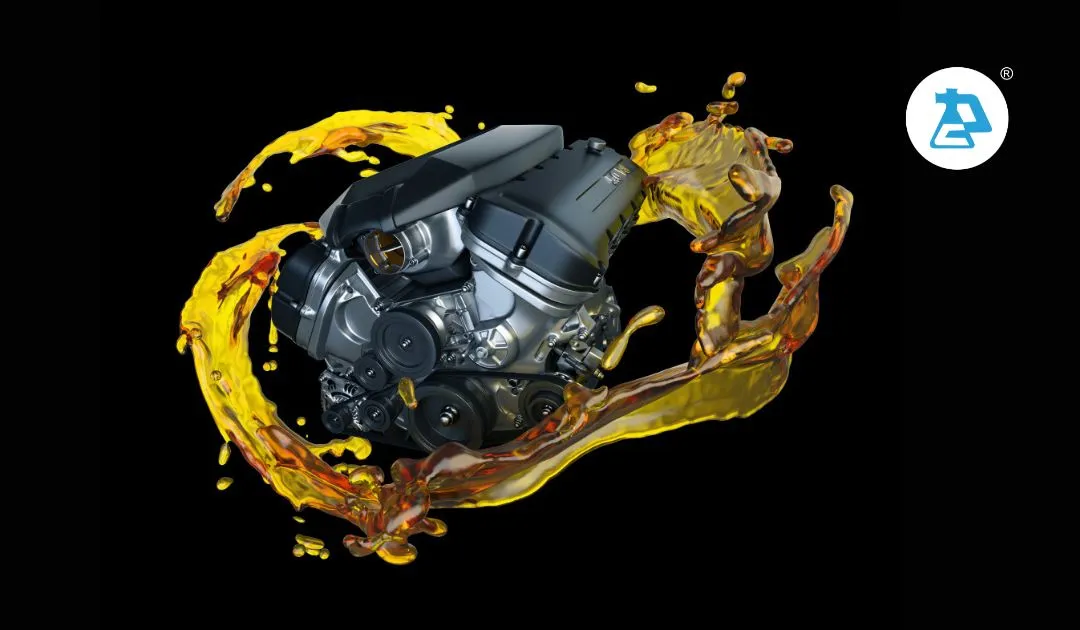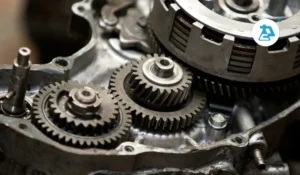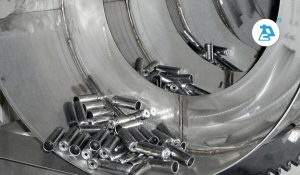Introduction:
Engines are the driving force behind modern machinery, powering everything from cars and trucks to industrial equipment and aircraft. Amidst the intricate dance of pistons, cylinders, and crankshafts lies a critical element that ensures the smooth operation and longevity of these mechanical marvels – engine lubrication. In this comprehensive exploration, we delve into the intricacies of engine lubrication basics, unraveling the mysteries of how it begins, the major factors at play, the significance of protection, cleanliness, and performance, and other essential aspects that keep the heart of our machines beating strong.
How an Engine Works:
Before delving into the role of engine oil, let’s have a basic understanding of how an engine operates. An internal combustion engine, found in most vehicles, works by burning a mixture of fuel and air to generate power. This combustion occurs within the engine cylinders, driving pistons up and down, which in turn, rotates the crankshaft, ultimately powering the vehicle.
Role of Engine Oil :
Engine oil plays a crucial role in ensuring the smooth operation and longevity of the engine. Its primary functions include:
Lubrication:
Engine oil forms a protective layer between moving parts, reducing friction and preventing wear and tear. This is vital for the longevity of the engine.
Cooling:
Engine oil helps dissipate heat generated during combustion, preventing the engine from overheating.
Cleaning:
It carries away debris, contaminants, and by-products of combustion, preventing the buildup of sludge and deposits that can hinder engine performance.
Sealing:
Engine oil forms a seal between the piston rings and cylinder walls, preventing combustion gases from leaking into the crankcase.
The Genesis of Engine Lubrication:
The Fundamental Need:
At the core of engine lubrication lies the fundamental need to reduce friction between moving parts. The relentless interaction of metal surfaces within the engine generates heat and wear. Lubrication acts as the silent guardian, ensuring that the engine components glide smoothly against each other, minimizing friction and heat buildup.
Lubrication Types:
Engine lubrication can take various forms, ranging from traditional oils to advanced synthetic lubricants. Understanding the characteristics of different lubricants is crucial for optimal engine performance. We explore the nuances of mineral oils, synthetic oils, and blends, shedding light on their specific applications and benefits.
Major Factors in Engine Lubrication:
Viscosity – The Lifeblood of Lubrication:
Viscosity, often referred to as the thickness or flowability of the lubricant, plays a pivotal role in engine lubrication. We unravel the science behind viscosity grades, examining how it impacts engine performance across different operating conditions.
Temperature Regulation:
Engines operate in a wide range of temperatures, from scorching heat to freezing cold. Effective engine lubrication involves managing temperature extremes to prevent oil thinning or thickening, ensuring optimal viscosity and performance.
Pressure and Load:
The forces exerted on engine components vary with operating conditions. Delving into the effects of pressure and load on lubrication, we explore how lubricants adapt to different stress levels, providing the necessary protection to critical engine parts.
Engine Oil Types and Grades:
There are various types of engine oils, and they are classified based on their composition:
Mineral Oil:
Derived from crude oil, mineral oil is a traditional lubricant.
Synthetic Oil:
Created through chemical processes, synthetic oil offers enhanced performance, especially in extreme conditions.
Blend (Semi-Synthetic):
Combining mineral and synthetic oils, blends aim to provide a balance of performance and cost-effectiveness.
Engine oils are also classified based on viscosity, represented by two numbers, such as 10W-30. The “W” stands for winter, and the numbers indicate the oil’s viscosity at low (winter) and high temperatures. Lower viscosity oils (e.g., 5W) are thinner and flow better in cold conditions, while higher viscosity oils (e.g., 40) are thicker and offer better protection in high temperatures.
The Trio of Protection, Cleanliness, and Performance:
1. Protection – Shielding the Engine’s Vital Organs:
Protection is the bedrock of engine lubrication. We dissect the protective mechanisms employed by lubricants, from forming a physical barrier against metal-to-metal contact to neutralizing harmful contaminants that can jeopardize engine health.
Wear Prevention:
Friction, the nemesis of engine longevity, leads to wear and tear of components. Engine lubrication, with its oil film, acts as a barrier, preventing direct metal-to-metal contact. Understanding the principles of hydrodynamic lubrication unveils the science behind wear prevention.
Corrosion Resistance:
Moisture and contaminants can infiltrate an engine, initiating a corrosive onslaught. Engine oils are fortified with additives that combat corrosion, ensuring the integrity of engine components even in harsh environments.
Advanced Additives:
The role of additives in modern lubricants is indispensable. From anti-wear additives to antioxidants, these compounds contribute to the enhanced protection and longevity of the engine. Exploring the science behind these additives provides a deeper understanding of their vital functions.
2. Cleanliness – The Engine’s Lifeline:
A clean engine is a healthy engine. We delve into the significance of maintaining lubricant cleanliness, exploring filtration systems, and the role of additives in preventing sludge, deposits, and other contaminants that could compromise engine efficiency.
Filtration Systems:
Oil filters, the unsung heroes of cleanliness, diligently trap contaminants, preventing them from circulating within the engine. The importance of regular oil and filter changes cannot be overstated in maintaining a clean and efficient lubrication system.
Detergents and Dispersants:
Modern lubricants are formulated with detergents and dispersants that combat the buildup of sludge and deposits. These chemical warriors maintain engine cleanliness, preserving the efficiency of the lubrication system.
Oil Analysis Techniques:
Advancements in oil analysis techniques offer insights into the health of an engine. From wear particle analysis to monitoring additive depletion, these diagnostic tools empower vehicle owners and mechanics to make informed decisions about maintenance and lubricant selection.
3. Performance – Beyond Friction Reduction:
Performance in engine lubrication extends beyond friction reduction. We investigate how lubricants enhance fuel efficiency, contribute to emissions control, and play a pivotal role in meeting stringent environmental standards.
Friction Reduction:
Reducing friction is synonymous with enhancing performance. Advanced lubricants with friction modifiers and anti-wear additives contribute to smoother engine operation, translating to improved fuel efficiency and power delivery.
Fuel Economy:
Engine lubrication is not merely about protection and cleanliness; it also influences fuel economy. Low-friction lubricants, coupled with efficient lubrication systems, contribute to reduced energy losses, ultimately enhancing fuel efficiency.
Lubrication and Engine Design:
The synergy between lubrication and engine design is a fascinating aspect of automotive engineering. Exploring how lubrication considerations influence engine design sheds light on the interconnected nature of these two critical components.
Engine Lubrication Challenges and Solutions:
Environmental Factors:
External elements such as dust, water, and contaminants pose constant challenges to engine lubrication. We explore how advancements in lubricant technology address these challenges, ensuring the longevity of engines in diverse operating environments.
Extended Oil Change Intervals:
The traditional notion of changing oil every few thousand miles is evolving. We delve into the concept of extended oil change intervals, examining the role of synthetic lubricants and advanced monitoring systems in optimizing maintenance schedules.
Future Trends and Innovations in Engine Lubrication:
Nanotechnology in Lubricants:
The integration of nanotechnology into lubricant formulations is revolutionizing engine lubrication. We explore how nanomaterials enhance lubricant properties, improving wear resistance and overall engine efficiency.
Intelligent Lubrication Systems:
The future of engine lubrication lies in intelligent systems that continuously monitor engine conditions and adjust lubrication parameters in real-time. We unravel the potential of these smart systems in optimizing engine performance and extending component life.
What to Look for in an Engine Oil:
Viscosity Grade:
Choose an oil with the right viscosity grade for your vehicle, considering the climate and operating conditions. Check your vehicle’s manual for the recommended viscosity.
API (American Petroleum Institute) Certification:
Look for oils with the API certification symbol. The two-letter code indicates the oil’s performance level, with SN being a common certification for gasoline engines.
Additives:
Quality engine oils include additives that enhance performance. Anti-wear additives, detergents, and antioxidants are examples of beneficial additives.
Compatibility:
Ensure that the chosen oil is compatible with your vehicle’s engine type (gasoline or diesel) and any specific requirements specified in the owner’s manual.
Change Intervals:
Consider the oil change intervals recommended by the vehicle manufacturer. Some modern oils, especially synthetics, may allow for longer intervals.
Conclusion:
In the intricate world of engines, where metal meets metal in a harmonious dance of power and precision, engine lubrication stands as the unsung hero. From its humble beginnings to the complex formulations of today, lubrication ensures that our engines not only run smoothly but endure the tests of time and operating conditions. As technology continues to advance, the role of lubrication in engine performance will only become more critical. Understanding the basics of engine lubrication is not just a journey into the depths of machinery; it is an exploration of the lifeblood that keeps our engines pulsating with vitality.





